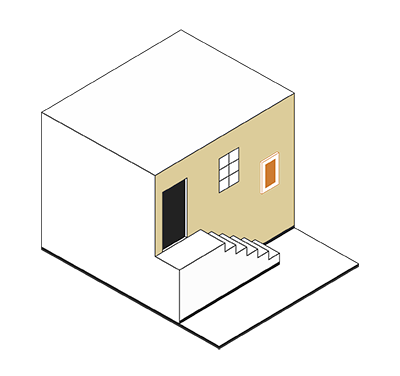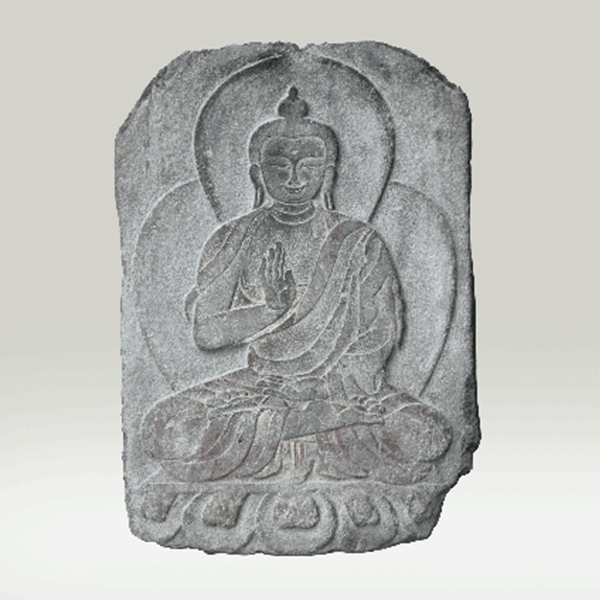Stone slab with the historical Buddha Shakyamuni
See it in the Museum

Outside garden
Orientation 2
Wall object 1

ABS 245
Code: ABS 245
Country: Tibet
Style:
Date: 1500 - 1600
Dimensions in cm WxHxD: 55 x 80 x 3
Materials: Stone carving
Stone slab with the historical Buddha Shakyamuni
This stone slab represents the historical Buddha Shakyamuni seated legs crossed in meditation on a lotus seat. Wearing the triple robe of the renunciants, his right hand is raised in the gesture of protection or absence of fear while his left rests on his lap in contemplation. He is endowed with all the distinctive marks and signs of a “great being:” short curly hair, a cranial protuberance (ushnisha), a curl of hair between the eyebrows (urna), elongated earlobes, and three marks on the throat, and so on.
The custom of engraving rock-cliffs, stone boulders and stone slabs is a very ancient tradition on the Tibetan plateau.
A Buddha is an “Enlightened One”, awakened to the true nature of existence. He has transcended is human condition and is “no longer a man, nor a god”. He has reached nirvana– “the extinction” of desire and karma – and he is free from samsara, the endless cycle of existence and suffering. A Buddha generally appears as a renunciant, devoid of ornaments.
This stone slab represents the historical Buddha Shakyamuni seated legs crossed in meditation on a lotus seat. Wearing the triple robe of the renunciants, his right hand is raised in the gesture of protection or absence of fear while his left rests on his lap in contemplation. He is endowed with all the distinctive marks and signs of a “great being:” short curly hair, a cranial protuberance (ushnisha), a curl of hair between the eyebrows (urna), elongated earlobes, and three marks on the throat, and so on.
The custom of engraving rock-cliffs, stone boulders and stone slabs is a very ancient tradition on the Tibetan plateau.
A Buddha is an “Enlightened One”, awakened to the true nature of existence. He has transcended is human condition and is “no longer a man, nor a god”. He has reached nirvana– “the extinction” of desire and karma – and he is free from samsara, the endless cycle of existence and suffering. A Buddha generally appears as a renunciant, devoid of ornaments.

